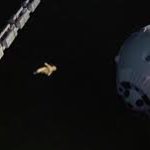The Day the Earth Stood Still (2008)

The Day the Earth Stood Still (2008), directed by Scott Derrickson, is a contemporary remake of the 1951 classic science fiction film of the same name. This film reimagines the original’s themes and narrative for a modern audience, exploring issues of environmental degradation, human conflict, and the potential consequences of humanity’s actions on a global scale. Starring Keanu Reeves as the extraterrestrial visitor Klaatu and Jennifer Connelly as Dr. Helen Benson, the film delves into profound questions about human nature and the future of our planet. This essay provides a comprehensive analysis of the film’s plot, themes, characters, and its cultural significance.

The plot of The Day the Earth Stood Still centers on the arrival of an alien spacecraft in New York City, which brings with it an extraterrestrial named Klaatu (Keanu Reeves) and a massive, seemingly indestructible robot named Gort. Klaatu’s arrival, though initially met with awe and fear, quickly turns into a crisis as he delivers a stark warning to humanity. He reveals that Earth’s destructive behaviors, particularly environmental exploitation and warfare, have put the planet on the brink of catastrophic consequences.
Klaatu’s mission is to inform humanity that their actions have endangered the planet’s future and that they must change their ways or face extinction. The narrative follows Klaatu’s interactions with Dr. Helen Benson (Jennifer Connelly), a scientist who becomes a key figure in understanding and negotiating with the alien visitor. As Klaatu’s message unfolds, tensions rise both among the characters and globally, as governments and military forces react to the threat of potential annihilation.
The narrative structure of the film incorporates a mix of suspense, action, and philosophical reflection. The film’s pacing alternates between moments of high tension, as governments and military forces grapple with the alien threat, and quieter, introspective scenes that explore Klaatu’s motivations and the human condition. The climax of the film builds to a dramatic confrontation between Klaatu and humanity, underscoring the film’s central message about the need for environmental and societal reform.

Klaatu, portrayed by Keanu Reeves, is the film’s central character and represents the alien perspective on human behavior. Reeves’s performance as Klaatu is marked by a stoic and enigmatic demeanor, reflecting the character’s otherworldly nature and his mission to deliver a crucial message to humanity. Klaatu’s development throughout the film reveals his deep concern for the planet and his struggle to reconcile his mission with his growing empathy for humanity.
Dr. Helen Benson, played by Jennifer Connelly, serves as the human protagonist who becomes the primary conduit for understanding Klaatu’s message. Connelly’s portrayal captures Helen’s scientific curiosity and her emotional journey as she grapples with the implications of Klaatu’s warning. Her character’s development is central to the film’s exploration of human nature and the potential for change.
The supporting cast includes notable actors such as Jaden Smith, who plays Helen’s stepson Jacob, and Kathy Bates, who portrays Secretary of Defense Regina Jackson. Smith’s portrayal of Jacob adds a personal and emotional dimension to the narrative, while Bates’s character represents the governmental response to the alien threat. The interactions between these characters contribute to the film’s exploration of various perspectives on the crisis.
The film’s central theme is the impact of human actions on the environment and the need for societal change. The Day the Earth Stood Still serves as a cautionary tale about the consequences of environmental degradation and the dangers of technological advancement without regard for ecological balance. Klaatu’s message is a reflection of real-world concerns about climate change, pollution, and the unsustainable exploitation of natural resources.
The film also explores themes of redemption and the potential for change. Klaatu’s interactions with humanity reveal his belief that there is still hope for redemption and that people have the capacity to alter their destructive behaviors. This theme is embodied in Helen’s character, whose growing understanding of Klaatu’s message signifies the possibility of positive transformation.
The symbolism in the film is also significant. The character of Gort, the robot, represents the formidable and unyielding force of nature or the consequences of humanity’s recklessness. Gort’s destructive power serves as a metaphor for the potential consequences of ignoring environmental and ethical concerns. Additionally, the alien spacecraft and Klaatu’s advanced technology symbolize the broader cosmic perspective on human behavior, emphasizing the insignificance of human conflicts in the grand scheme of the universe.

The film’s visual and technical elements contribute to its impact and effectiveness. The special effects and CGI are used to create a realistic and immersive depiction of the alien spacecraft, Gort, and the various destructive events that occur throughout the film. The visual representation of the alien technology and the film’s depiction of global devastation enhance the sense of urgency and tension.
The film’s cinematography and visual style, characterized by its stark and somber tones, complement the narrative’s themes of environmental crisis and existential threat. The use of modern special effects techniques allows for a visually striking portrayal of the film’s science fiction elements, contributing to its overall impact.
The Day the Earth Stood Still (2008) received mixed reviews from critics and audiences. Some praised the film for its thought-provoking themes and its attempt to update the classic story for a contemporary audience. Others criticized it for its lack of originality and its reliance on formulaic science fiction tropes. Despite the mixed reception, the film’s exploration of environmental issues and its reflection on humanity’s role in the future contribute to its relevance and cultural significance.
The film also highlights the enduring appeal of science fiction as a genre that allows for the exploration of profound social and ethical questions. By revisiting a classic story with a modern perspective, The Day the Earth Stood Still underscores the continued relevance of science fiction in addressing contemporary concerns and prompting reflection on humanity’s place in the universe.
The Day the Earth Stood Still (2008) offers a modern reimagining of a classic science fiction story, exploring themes of environmentalism, redemption, and the potential consequences of human actions. Through its narrative, character development, and visual style, the film presents a compelling and thought-provoking commentary on the state of the world and the need for change. While its reception was mixed, its contribution to the genre and its reflection on contemporary issues make it a significant entry in the science fiction canon. The film’s message about the need for environmental stewardship and societal reform remains relevant, underscoring the importance of addressing global challenges in the quest for a sustainable future.











